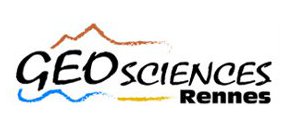Spring discharge, transit times and intermittency in an alpine catchment: how geomorphology shapes the spatio-temporal dynamics?
Résumé
We investigate spatial and temporal behaviors of spring discharge, transit times and intermittency of a network of springs located in an alpine catchment (Natural conservation area of the Massif of Saint-Barthélemy, Pyrenees, France). Field observations have revealed unprecedented variability of behaviors across the catchment, with springs involving sustained high discharge rates during baseflow while others showing intermittency of wetting and drying periods. This dynamic is expected to be directly dependent on the volume and transmissivity of the connected aquifer set by specific geomorphological (topography scaling, rockslides, deep seated landslides, detritic sediments) and geological features (lithology, faults). Here we aim at understanding the relative controls of those factors in controlling the observed hydrogeological behaviors across the catchment.
We performed two field missions during 2021 high and low flow regimes. More than 20 flowing springs and wetlands have been systematically mapped and sampled for environmental tracer analysis. We found that about 30% of the stream and wetland network contract between high and low flows. The springs responsible for this intermittence are connected to high transmissive shallow aquifers with low storage capacities organized within shallow soils and rockslides. However, perennial springs are influenced by deep groundwater flow paths within the bedrock. The analysis of anthropogenic dissolved gases like CFCs and SF6 revealed an average transit time of the order of 10 years for perennial springs with important variabilities across the catchment. The relatively high residence times is also confirmed by high Helium concentrations. We used the gathered dataset to calibrate a hydrogeological model designed to test the relative controls from specific geomorphological and geological characteristics. By comparing models with different structural settings, we found that topography and aquifer compartmentalization, through the decreasing trend in hydraulic conductivities, are key parameters in setting the spatio-temporal pattern of saturated areas and the distribution of transit times across the catchment. In perspective, we discuss the potential evolution of the extent, discharge magnitude and the transit time of seeping groundwater under changing recharge scenarios.



